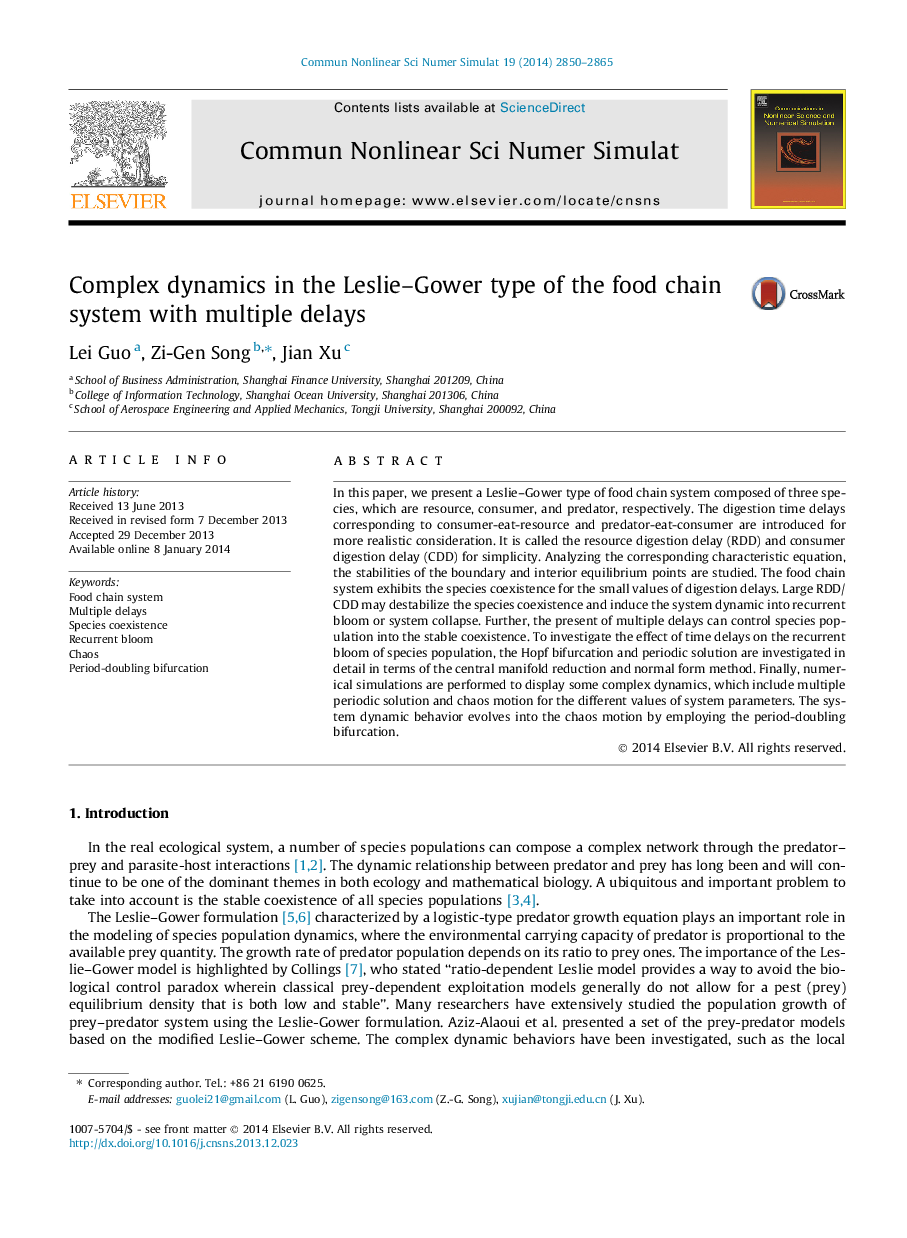| Article ID | Journal | Published Year | Pages | File Type |
|---|---|---|---|---|
| 758248 | Communications in Nonlinear Science and Numerical Simulation | 2014 | 16 Pages |
•Leslie–Gower type of the food chain system composed of resource, consumer, and predator is presented.•Digestion delays corresponding to consumer-eat-resource and predator-eat-consumer are investigated.•The species coexistence characterized by the delayed independent stability is illustrated.•The species coexistence controlled by multiple delays is analyzed.•Multiple periodic motion and chaotic behavior are exhibited.
In this paper, we present a Leslie–Gower type of food chain system composed of three species, which are resource, consumer, and predator, respectively. The digestion time delays corresponding to consumer-eat-resource and predator-eat-consumer are introduced for more realistic consideration. It is called the resource digestion delay (RDD) and consumer digestion delay (CDD) for simplicity. Analyzing the corresponding characteristic equation, the stabilities of the boundary and interior equilibrium points are studied. The food chain system exhibits the species coexistence for the small values of digestion delays. Large RDD/CDD may destabilize the species coexistence and induce the system dynamic into recurrent bloom or system collapse. Further, the present of multiple delays can control species population into the stable coexistence. To investigate the effect of time delays on the recurrent bloom of species population, the Hopf bifurcation and periodic solution are investigated in detail in terms of the central manifold reduction and normal form method. Finally, numerical simulations are performed to display some complex dynamics, which include multiple periodic solution and chaos motion for the different values of system parameters. The system dynamic behavior evolves into the chaos motion by employing the period-doubling bifurcation.
